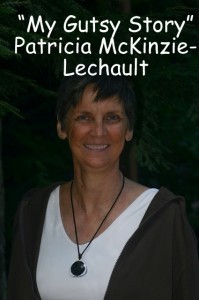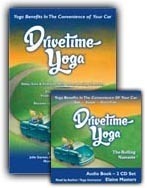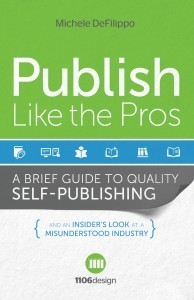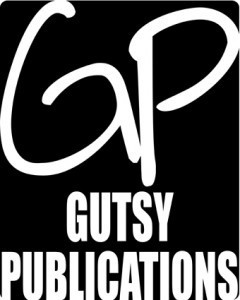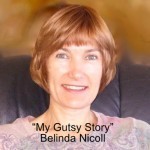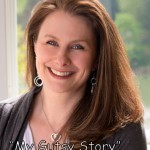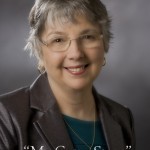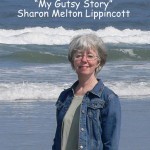Sonia Marsh's Blog, page 35
November 16, 2012
Winner of October “My Gutsy Story”
I am so sorry I forgot to announce the wonderful winner of the “My Gutsy Story” for October yesterday. Blame it on me being too busy, and I know there is no excuse. As far as I’m concerned, you’re all winners and I am grateful to you for submitting your “My Gutsy Story.”
Fortunately the polls closed yesterday at midnight, so the votes are accurate.
Congratulations to Patricia McKinzie-Lechault. You won 1st place.
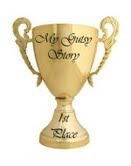
Patricia McKinzie-Lechault
Sonia Marsh Says: I loved your “Gutsy” attitude and what you said to your “Dad, I’m only 23. How many chances will I have to play? To live in a new country, meet new people?”
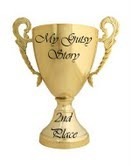
Don Darkes
Don Darkes takes 2nd Place.
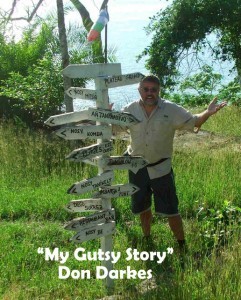
Don Darkes
Sonia Marsh Says: You certainly have a “Gutsy” life with many adventures, and I love the way you overcame one major fear with another.
Doreen Cox, takes 3rd Place. Dody is a wonderful social media supporter.

Doreen Cox
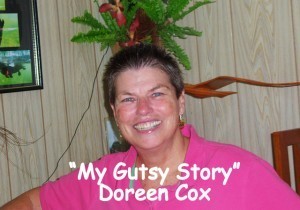
Doreen Cox
Sonia Marsh Says: You told your story with such honesty and it made me realize how sad it is when we love someone and they grow old and can no longer take care of themselves.
4th Place goes to my husband Duke Marsh
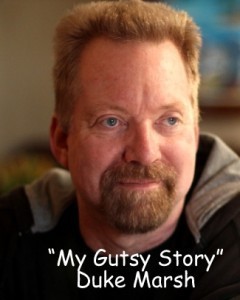
Duke Marsh
Sonia Marsh Says: I am so proud of you for pursuing your dream of making movies.
Last but not least is Kim Brower in 5th place.
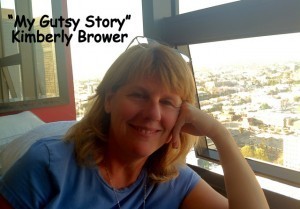
Kimberly Brower
Sonia Marsh Says: In sharing a typical spring-time farm dance, you brought us into the heart of farm culture; a place that is good and strong, something you needed while questioning the city life you left behind.
We have started our November “My Gutsy Story” series with Jerry Waxler and Elaine Masters.
Do you have a “My Gutsy Story” you’d like to share?
NOW is the time to submit your “My Gutsy Story” and get published in our Anthology. Please contact sonia@soniamarsh.com for details.
You can find all the information, and our sponsors on the “My Gutsy Story” contest page. (VIDEO) Submission guidelines here

November 15, 2012
I Can’t Believe I Have John McAfee As a Facebook Friend
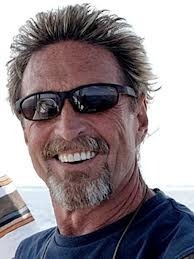
John McAfee
Yes, you heard me right. John McAfee, the anti-virus pioneer who is being sought for questioning about a murder case, lives on the island of Ambergris Caye, where my family lived for one year.
Thanks to a mutual contact on the island, I became “friends” with him on Facebook.
It’s not like I ever wrote to him on FB, however, today with US News covering the scandal with John McAfee, it no longer surprises me to read about crime, gossip, guns, drugs and dog killings on the island where we lived. Even the Telegraph has an appropriate title: John McAfee: sex, drugs and anti-virus software.
Looking at the photos of John McAfee’s house, and Gregory Faull’s, the murder victim, I’m almost certain they lived a few houses north of ours on Ambergris Caye. In fact, I’m also 100% sure that Greg, is the same contractor from Florida that we invited for a beer in our house. If it’s the same Greg, we nick-named him the “lobster guy.” I shall never forget when he told us he had caught thirty lobster in about an hour or so, while my son Steve and his dad caught only one puny little lobster in two hours. We were all so envious of his lobster-catching skills.
Greg was a fun guy who spent half his time building houses in Florida, and then the rest building his own home on Ambergris Caye. He invited us inside his house to show off the huge rooms he had built. (Read page 193 of Freeways to Flip-Flops, and you’ll find him. I changed his name to Mitch.)
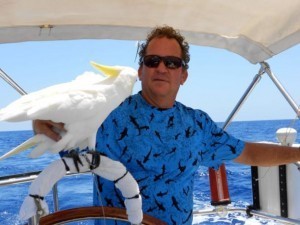
Greg Faull
Life on the island of Ambergris Caye was both scary and exciting. For such a small island, there was always something going on, and for those of you who have read my memoir: Freeways to Flip-Flops: A Family’s Year of Gutsy Living on a Tropical Island, you might recall certain chapters where I expressed fear once in a while about living on Ambergris Caye.
Here is one excerpt about a drug boat from Columbia:
I strolled along the beach to get away from the bustle of golf carts, taxis and bikes on Front Street. The next Island Ferry was scheduled for 11 a.m., so I collapsed on the wooden step in the shade, thinking about how much our lives had changed in just two months. Curiosity led me to the end of the boat dock, where some locals had gathered. They were pointing at something in the distance, and when I saw what they were looking at, my heart skipped a beat. A boat had capsized and six men holding long poles were attempting to flip it over. “Oh, my God, Duke must have lost control of the Island Rider,” I thought, straining my eyes to see if a Cubs baseball cap was floating in the water.
“Mario, what happened to the boat?” I asked. Mario was one of the Island Ferry’s boat captains.
“It’s a drug boat from Columbia,” he said.
“Does this happen often?” I asked.
“Yes, lots of drug smuggling from Colombia to Mexico.” After years of living in my safe Orange County neighborhood, I suddenly felt vulnerable. When I reached home, I hurried upstairs to tell Duke about the capsized boat.
Another excerpt about my fear of being alone with my two younger sons on Ambergris Caye when Duke left for California.
My ears were on high alert for any unusual sounds, so we watched a comedy I knew would make Josh laugh and me forget my fear for a while. “Can I sleep in Steve’s bed?” Josh asked, snuggling closer to me than usual on the couch.
“Of course,” I replied. At least that way, I wouldn’t be all alone downstairs. Alec would sleep upstairs with Cookie.
I hid a solid mahogany rolling pin underneath Duke’s pillow and tucked a machete behind some books on the shelf next to my bed. I regretted not following Lucy’s advice – she was a 70-year-old woman from Michigan who lived alone in town – “Keep a bullhorn next to your bed. It’ll scare the heck out of any thief or rapist.”
So this time Belize is making national news due to a scandal involving a famous American businessman: John McAfee.
What a small world.

November 12, 2012
“My Gutsy Story” by Elaine Masters
Answering the Call
It was winter in San Rafael. I was in front of my glowing computer, checking email. Tucked into a newsletter was an invitation to see the pyramids of Teotihuacan. Pyramids? In Mexico? I clicked on the link.
What opened up changed my life forever. An image filled my screen with stone snakes and two large pyramids set in a wide valley. It took my breath away. Excitedly I read the description of a ‘power journey’ filled with the ancient Nagual teachings and of four days exploring the Avenue of the Dead with a teacher, Victoria Allen. She was one of don Miguel Ruiz’, author of The Four Agreements, elder students was taking small groups to the ruins of the ancient city of “Teo.”
My heart wanted to go and suddenly longed for transformation, for spiritual connection and for the ancient stone site. It wasn’t logical, but from that moment I was determined to go.
I had been living in a disaster of a marriage, emotionally abused and sexually abandoned as the chief caregiver of my 5 year old son while my husband worked a series of jobs that often took him away from home for weeks and into the arms of other women. It wasn’t the marriage contract I’d signed on to. I felt trapped, was financially dependent and overly protective of my only child. How could I ever leave the country, my family for even a few days or find the money? I was such a victim!
Yet, within three months I flew into Mexico City to join a small group of seekers. My parents had surprisingly sold some property and split the proceeds between my siblings and me. A few weeks after I saw the Teo flier, they sent the check and made me promise to put the funds in a separate account in my name only. That was their only caveat and I held to the agreement. Without realizing it, I had begun my Toltec journey from that moment and was practicing one of the Four Agreements – Be impeccable with your word. What was also surprising was my husband’s agreeing to take care of my son while I was away. Soon I was packing.
Victoria had sent detailed instructions on how to prepare for the trip. I was advised to put my personal life into order, to even make a will. It scared me at first but it was the first step to opening up to healing. I was intrigued and quietly prepared.
Walking alone into the labyrinth of Mexico’s largest airport took a little more gumption but soon I was with a new, chattering family. Our small group of 21 men and women climbed into vans for the forty minute ride to Teo. After rumbling along in traffic and through the countryside, we entered a narrow road and someone shouted, there’s the Pyramid! The vision touched me with amazement that I had come so far and my heart opened with gratitude.
We pulled up to the colorful Villa Archaeologico and settled into our sweet, comfortable rooms which ringed a large swimming pool and patio. It was our home base. Each morning outside the lobby, we gathered for final instructions before beginning our single-file, silent procession to the ancient site.
I thrilled to look straight up the Avenue of the Dead as we left, all the way up the steps of the Pyramid of the Moon at the far end. Each morning we walked through the entry gates, past other tourists and uniformed students, to visit the ancient classrooms and work on whatever was no longer serving us. I had no expectations and was no stranger to rituals, having grown up in Catholic schools. It was nourishing to participate in small actions that held large significance which, I soon discovered, revealed old wounds. Many of our small group were hurting. We shared so much and with Victoria’s gentle guidance, let go, opened up more and let go again and again.
On our third day we walked up the Avenue of the Dead in determined silence. All our preparations and practices led to climbing the Pyramids. I walked silently past the artisans and wove through the crowds, scarcely hearing the small whistles blown by the vendors and the many different languages being spoken.
There was a shift and words won’t describe adequately how I stepped into a new awareness. It was as if I were everything and nothing. The silence within me roared. I was fully myself – the same, comforting, familiar me, and simultaneously part of everything. Victoria came to sit next to me on the steps of the Pyramid to check in with how I was doing. I only tilted my head and dared to look deeply in her eyes with a slight smile. She gently touched me and simply said, “Good”, before she moved to check in on the others.
It was all good but the profound shift slowly faded. What didn’t was the sense that I had returned to myself. I returned too to my home in Northern California and shocked my husband by how happy and clear I was. We didn’t stay together long after that first trip to Teo and I could never have initiated my divorce were it not for my first power journey to Teo.
Life isn’t always pleasant but that can be necessary. I came through all the changes just fine and my son flourished after the separation. I’ve been on other power journeys to Teo since and my last, nearly ten years later, was with my new life partner. We walked the Avenue of the Dead in silence with our hands clasped. I live in gratitude for that profound place, for don Miguel’s teachings, Victoria and her partner, Doug’s, gentle guidance and for walking the difficult places that have led me to a life far richer and fuller than I could have dreamt.
Victoria and Doug Allen’s Website: https://www.raiseyourstate.com
Elaine Masters Bio:
Elaine J. Masters is a travel writer, speaker, scuba diver, yoga teacher and the award-winning author of Drivetime Yoga and Flytime Yoga.
She blogs at www.tripwellness.com and hosts a top ten podcast on the Women’s Radio Network and hosts several travel meetups in San Diego. Twitter: @tripwellness
Sonia Marsh Says: You prove something that I am a firm believer of: getting away from the familiar, getting out of your comfort zone to an unfamiliar environment helps you grow and strengthens you as a person. I am so happy you got the strength and courage to leave your “unhappy” marriage and find a new life. By the way, I love your Travel MeetUp group. It looks lively and very active. I wish you were in OC, not San Diego, as I would like to be a part of your group.
Please leave your comments for Elaine Masters below. She will be over to respond. Thanks.
Also, don’t forget to vote for your favorite October “My Gutsy Story.” You have until November 14th to vote, and the winner will be announced on November 15th. You can read all of them and vote here.
SCROLL DOWN ON SIDEBAR TO VOTE. Only ONE vote each.
Do you have a “My Gutsy Story” you’d like to share?
NOW is the time to submit your “My Gutsy Story” and get published in our Anthology. Please contact sonia@soniamarsh.com for details.
You can find all the information, and our sponsors on the “My Gutsy Story” contest page. (VIDEO) Submission guidelines here

November 8, 2012
Publish like the Pros
Have you thought about starting your own publishing company but don’t know how to start? I’d like to introduce you to Michele DeFilippo, owner of 1106 Design, a Phoenix-based company that assists authors in self-publishing their books. She has written a guest post to help you answer some questions.
A Guest Post by Michele DeFilippo
It happened to other bloggers and it finally happened to me: I convinced myself that if I had enough words in me to write a blog then I had enough words in me to write a book. Several months later, I self-published my first book Publish Like the Pros: A Brief Guide to Quality Self-Publishing (and an Insider’s Look at a Misunderstood Industry).
Self-publishing is not a simple process and many authors don’t know where to start. I confess: I own 1106 Design, a Phoenix-based company that assists authors in self-publishing their books, so I knew exactly where to start and I had a terrific team at hand to help me. But many authors—viewing self-publishing as very complicated—are stymied from the start by the question: Just who is the publisher?
The answer might seem obvious, but to many people it’s not. Traditional publishing companies are held in awe. They are the gatekeepers, determining who gets published and who doesn’t. Also, there are many “self-publishing companies” out there who know exactly how to capitalize on the confused author’s emotions, promising “easy” (and ultimately, expensive) solutions that are nothing more than classic bait-and-switch schemes. But authors don’t need a self-publishing company at all, so be savvy and steer clear. Remember, if you are self-publishing, YOU are the publisher!
The name you create for your independent publishing business (or “indie” publisher) is the “imprint” – the brand name under which the book is published. Having a logo created for your imprint will add a lovely professional touch to your book cover.
OK, so you’re an indie publisher; now what?
First, treat your endeavor like a business with you as the CEO and your book as your product. Your product should be the result of a lot of research. Hopefully you have researched the market potential for your book. Unfortunately, many authors write a book and then try to find a market for it. Instead, authors should determine a need in the marketplace and write a book to meet that need.
After your book is written, it needs to be polished and packaged into a high-quality product that meets industry standards and is attractive to buyers. No CEO can do this alone, and this is where your team comes in, which at a minimum, should consist of a book designer and an editor and proofreader.
A great cover and well-designed interior pages are essential to a quality product. Anything less will scream “self-published!” and surprisingly, a goal of self-publishing is to create books that don’t appear to be self-published. Your cover should deliver a compelling message and stand out from other books. The pages should be visually appealing, hold interest, and be easy on the eye. Consciously or subconsciously, these are factors that buyers consider when deciding to purchase a book. Book designers are trained professionals, and as such you should hire a book designer rather than attempt to do it yourself. In addition, your book designer can help you with your barcode, your logo and other aspects of the publishing process. Note that you can obtain your own ISBNs from Bowker (www.myidentifiers.com). Beware! Don’t allow a so-called “self-publishing company” to provide you with one of theirs!
An editor is also critical to the book’s success. Writing a book is much different than writing a blog! At a minimum, an editor will:
Check the order, flow and consistency of your material.
Ensure the content is not repetitive or redundant.
Edit for mistakes in terminology or logic.
Smooth out your writing, correct your errors, fix your typos and check your grammar.
You will also need a company to print your book. We suggest Lightning Source and CreateSpace as print-on-demand solutions, and yes, you can and should open your own account with them, putting you firmly in control. Print-on-demand services are a cost-conscious way of printing only enough books to meet current demand. You should also consider producing an eBook edition.
Once you’ve hired your team, you can think about marketing and distribution. You may wish to hire a marketing consultant; in fact, you can bring in a marketing consultant during your research stage to help you define the target market before the design process begins. Other services are available to help you along the way, such as a book title consultant, a copywriter to write your back cover copy, someone to index your book, a designer to create your press kit, and more.
Many companies offer self-publishing packages, with book design, editing, printing and other services bundled together at a reduced price. Personally, I think that being your own publisher puts you into a position of strength, where you get to choose the professionals that you want to work with. Good luck!
Michele DeFilippo owns 1106 Design, a Phoenix-based company that works with authors, publishers, business pros, coaches, consultants, speakers . . . anyone who wants a beautiful book, meticulously prepared to industry standards. After helping almost a thousand authors make their books a reality, Michele has just self-published her first book Publish Like the Pros: A Brief Guide to Quality Self-Publishing (and an Insider’s Look at a Misunderstood Industry)
Sonia Marsh says: After researching what goes into creating a professional looking book from various sources, including the book designer, Joel Friedlander, an expert in book design, I started my own publishing company, “Gutsy Publications.” I also looked at many design and formatting companies, and finally selected 1106 Design.
1106 Design did a fantastic book cover for me, ( my book cover,) a company logo and interior formatting as I could never have done such a professional job myself.
Michele DeFilippo is the author of Publish Like the Pros: A Brief Guide to Quality Self-Publishing
In case you didn’t already know, I’m a huge fan of 1106 Design. I’m so glad I discovered them for my indie-publishing needs.
***
Please vote for your favorite October “My Gutsy Story.” You have until November 14th to vote, and the winner will be announced on November 15th. You can read all of them and vote here.
SCROLL DOWN ON SIDEBAR TO VOTE. Only ONE vote each.
Do you have a “My Gutsy Story” you’d like to share?
NOW is the time to submit your own “My Gutsy Story” and get published in our Anothology. Please contact sonia@soniamarsh.com for details.
To submit your own, “My Gutsy Story” you can find all the information, and our sponsors on the “My Gutsy Story” contest page. (VIDEO) Submission guidelines here.
Our first November “My Gutsy Story” is by Jerry Waxler. You can read it here.

November 5, 2012
“My Gutsy Story” by Jerry Waxler
My Search Led Me to Story
When I graduated high school, I knew exactly what I wanted to do. Like my brother before me, I would study science and then go to medical school. At 18, I flew from my peaceful row home in Philadelphia straight into the turmoil of the anti-Vietnam War movement in Madison, Wisconsin. After six years of marijuana, rock and roll, and rebellion against “the system” the only thing I was certain about was that I didn’t want to have anything to do with growing up.
By 1971, I lived in a garage in Berkeley, California, going for days and then weeks without speaking to anyone. After attending a lecture by anthropologist Jane Goodall, I realized I could fulfill my destiny by living like a chimpanzee. I ate only fruit and stopped wearing my glasses so I was legally blind. I sold all my possessions for a one-way ticket to Central America where I would live on the beach and pick food from the trees.
When I was ready to leave, an old friend handed me a book which said my soul longed to return to God and that I would never be satisfied until I turned within. My mind leapt at the explanation so I replaced my chimpanzee-centric view of the world with a spiritual one and started to meditate. However, my passion for the inner life did not relieve my need to earn a living so I moved back east to be near my parents and got a job.
I still had to find my role in society, so I went to a therapist and each week told him about my struggle to live in the world. These weekly talks helped me tame my crazy decisions and feelings. Over time, I noticed these talks had a beneficial side-effect. To prepare for each session, I developed the habit of organizing my thoughts. Without realizing it, I was learning to tell my story.
The more I learned about my own story, the more curious I became about others. At 50, I returned to school and received a master’s degree in counseling psychology. As a therapist, I witnessed the soothing effect on clients when I asked them to tell me their story. Yet something was missing from these one-hour sessions. My clients’ lives, like my own, felt fragmentary.
I reached out to a mentor who suggested that to make sense of the whole journey, I should list events in chronological order. I went home and created my timeline. From that simple exercise, parts of my life that had always seemed disjointed began to fit together like the pieces of a puzzle. To help me turn these ordered memories into readable prose, I took a memoir class. There, I met other participants who were doing the same thing. We were finding our stories together.
To learn more, I read memoirs by the score, watching the years roll by through each author’s eyes, ears, sensations and thoughts. They let me into their lives and enriched my understanding of the world. I looked for more memoir classes, and found them offered in writing groups, senior centers, libraries, and schools. The bookstore offered an increasing number of memoirs by ordinary people. Talk shows featured more memoir authors, and I met an increasing number of people who wanted to shape their lives into stories. I had stumbled on a trend.
Like any trend, not everyone loved it. Some critics complained that writing about yourself is narcissistic. I tried to understand their point. According to the dictionary, narcissists believe they are admirable and above reproach. By contrast, most successful memoirs reveal flawed authors who make terrible decisions. Perhaps critics don’t think it’s healthy to spend so much time engaging in introspection. If that’s the case, their attitude contradicts the wisdom traditions of the world that promote introspection as a method to deepen selfless attitudes like generosity and forgiveness. Anyway, introspection is only the first half of writing a memoir. The second half requires craft and communication. Memoir writers build bridges across the chasms that separate us.
To learn more about the power of memoirs, I studied the thing called Story. From literary scholars and mythologists, I learned that since the beginning of recorded history, humans have been telling stories in order to make sense of life. I was experiencing this effect for myself. In the pages of my evolving manuscript, I watched my younger self desperately search for guiding principles, first in science, then in the counter-culture and finally in spirituality. Throughout those years, I craved pure rules and theories. Now, decades later, I discovered a unifying principle that tied it all together. In the shape of a story, I grasped real life with its messy wants, disappointments and realizations.
When I looked for teachers, I found them everywhere. I learned from literature professors, therapists, and creative-writing teachers. Above all, I reached out across the bridges that memoir writers had created from their lives to mine. In my younger years, I searched for my truths alone. Memoirs transformed my search into an enchanted one, looking for the story that connected me to society. Through blogs, groups, and social media, I found tribes of aspiring and accomplished memoir writers. By reading and writing together, our loosely knit groups fostered deeper appreciation for the power of Story within our own lives.
I decided to call this trend the Memoir Revolution. By exploring our lives and sharing them, we are breaking out of isolation and drawing together into a global community in which we empathize with each other’s race, religion, gender, economic and geographic history, infirmities, strengths, and longings.
***
Jerry Waxler Bio: Jerry Waxler shares his passion for life story writing on the blog Memory Writers Network which contains 100s of essays, interviews and book reviews. His two books, Learn to Write a Memoir and Four Elements for Writers are available from jerrywaxler.com. He teaches nonfiction writing at Northampton Community College in Bethlehem, Pennsylvania, is on the board of directors of the Philadelphia Writers Conference, and is an advisor to the National Association of Memoir writers. He has a B.A. in Physics and M.S. in Counseling Psychology.
Please check out Jerry Waxler’s websites: http://www.jerrywaxler.com
http://www.memorywritersnetwork.com/blog. Join him on Twitter, and Facebook, as well as LinkedIn: Jerry Waxler.
Sonia Marsh Says: What an amazing journey you’ve been through starting with a rebellious youth, attempting to find your role in society, and how writing parts of your life gave you a clearer picture of who you are.
I am on board with your global vision of sharing our stories and breaking down barriers through a Memoir Revolution.
As you mention, through your research,
“I learned that since the beginning of recorded history, humans have been telling stories in order to make sense of life. “
***
Please leave your comments for Jerry Waxler below. He will be over to respond. Thanks.
Also, don’t forget to vote for your favorite October “My Gutsy Story.” You have until November 14th to vote, and the winner will be announced on November 15th. You can read all of them and vote here.
SCROLL DOWN ON SIDEBAR TO VOTE. Only ONE vote each.
Do you have a “My Gutsy Story” you’d like to share?
NOW is the time to submit your own “My Gutsy Story” and get published in our Anothology. Please contact sonia@soniamarsh.com for details.
To submit your own, “My Gutsy Story” you can find all the information, and our sponsors on the “My Gutsy Story” contest page. (VIDEO) Submission guidelines here.

November 1, 2012
Vote for your favorite October “My Gutsy Story”

Just Like the 2012 Presidential elections: VOTE
This month he had 5 amazing “My Gutsy Story” submissions.
Please vote for your favorite story. You have until November 14th to vote, and the winner will be announced on November 15th.
SCROLL DOWN ON SIDEBAR TO VOTE. Only ONE vote each.
Duke Marsh shared his story about never giving up on your dreams and never taking, “No” for an answer.
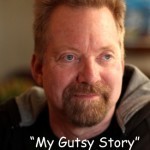
Duke Marsh
Don Darkes lives a life full of adventure and shares how he fought the fear of meeting his birth father for the first time at age forty-five, with another fear.
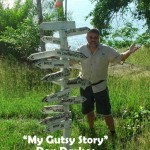
Don Darkes
Kimberly Brower takes her three young sons to live on a farm away from city life, where she questions her marriage and where she belongs.
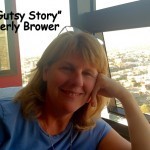
Kimberly Brower
Doreen Cox questions what happens when you become your mother’s mother? It’s a story about coming full circle.
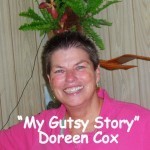
Doreen Cox
Patricia McKinzie-Lechault left the U.S. at 23 for Europe and made a bold decision that changed her life forever.
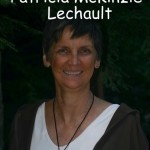
Patricia McKinzie-Lechault
Do you have a “My Gutsy Story” you’d like to share?
NOW is the time to submit your own “My Gutsy Story” and get published in our Anothology. Please contact sonia@soniamarsh.com for details.
To submit your own, “My Gutsy Story” you can find all the information, and our sponsors on the “My Gutsy Story” contest page. (VIDEO) Submission guidelines here.

October 29, 2012
“My Gutsy Story” Patricia McKinzie-Lechault
Cornfields to City of Lights –
Gutsy Globetrotter Breaks Barriers In Basketball
“What kind of operation?” Mom inquired
“Will she walk again?” Dad asked the doctors.
What if I couldn’t play basketball? I fell into a restless sleep with my legs trapped in traction. The phone ringing beside my hospital bed woke me at midnight.
“Allo, dis ze trainer for Asnières Club de Basket. We want you play in Paris?”
“What? I can’t understand you.”
“You play basket in France wiz us?”
“Yes, but I have a back problem.” I said.
“What you say? No problem? We pay you go back. We pay plane. We pay flat and car. ”
“No. It is my health.”
“’Ealth? Sink about it. I call few days.”
I hung up the phone, bewildered. He was talking about the star forward. Not me, the invalid, who couldn’t crawl to the bathroom.
Weeks later I had rehabilitated from a slipped disk in time to debut in America’s first Women’s Professional Basketball League (WBL), but my team declared bankruptcy at Christmas. I was one of the causalities, limping from a bad back and broken heart. However, when Francis, the French coach, called back the next summer, I was ready to forfeit all to embark on an odyssey playing basketball abroad.
“What about your coaching contract?” my dad asked when I broke the news.
“I got out of it,” I answered tying my shoelaces. I was dressed in shorts, T-shirt and high-tops, always ready for a game.
My dad rattled off arguments as to why I should quit playing professional ball. He was right. I would never make money, or have job security.
“What about your back?” he asked.
My back. I squeezed my eyes shut and saw my crippled body strapped to a white hospital bed. My mind echoed Dad’s words, “No, no, no,” but my heart spoke louder, “Go, go, go.”
“When are you going to get a real job?”
“Dad, I’m only 23. How many chances will I have to play? To live in a new country, meet new people?”
My dad, first to disagree with my decision, was also the first to help me to prepare. I shot baskets; my dad rebounded in a musty fieldhouse as stifling as a sauna.
But what was I thinking? I dropped out of French class in school and had no idea where Paris was. In 1980, small town midwestern girls rarely left the State and never crossed continents. My friends, also clueless, told me to pack tampons and toilet paper as if I were moving to a Third World Country.
A week later, standing in a strange airport, my heart pounding, I spotted a man, waving a sign printed, ASNIÉRES, and yelling, “Potreesha!”.
I thought my dream to play basketball abroad had come true when my plane touched down in Europe. But when I looked out Francis’ car window and saw little people pecking cheeks and scurrying down cobblestone streets with baseball bats (baguettes) slung over their shoulder, it hit me, “Oh my God, I’ve landed on another planet.”
For the next six hours, I smiled and struggled to understand the conversation over dinner. First we drank the apéritif. Then wine with fish. Wine and meat. Wine and cheese. Dessert and champagne. I stared at the claret liquid, debating what to do. I grew up in a coach’s family, where drinking was taboo. How could I imbibe alcohol in front of my coach? Yet to avoid offending the hostess, I tipped my glass at regular intervals. Alarmingly, as soon as my glass was half empty, Francis filled it again.
My stomach ached from the new foods; my head pounded from the new words. And our first practice almost never started. A dozen players greeted one another by kissing each other on the cheeks four times. On our first road trip, before boarding a caravan of cars driving us to Belgium, we repeated the ritual under a street lamp. Then I hopped in Francis’s car, whisking us through Paris as the early morning mist rose above the Arch of Triumph and the deserted Champs Elysees.
Near the border, Francis asked, “You have your passport?”
“Passport? No, what do I need my passport for?”
“Customs!” Francis pulled the car off the side of the road.
“Dehors!” he shouted, his face crimson. “Out.”
I feared he would abandon me on the roadside. Instead, he opened the trunk and pointed.
I crawled in, folding my long limbs into a ball, imagining the news headlines, “American superstar asphyxiated when smuggled across the border in the boot of a car.”
During our first game, I was so rattled from the ride in the trunk that my hands shook. A teammate came in off the bench and whispered, “No pass. Shoot.”
I swished the next ten shots. We beat Holland in the final. At the awards ceremony when they announced, “Patreesha Mackencee, meilleure joueuse,” a pair of hands pushed me forward to accept the MVP trophy. I smiled as I shook hands with the tournament director, and then turned to face my teammates’ cold stares, longing to crawl under the floorboards.
Later, I joined the others in the bar, a standard fixture in European gyms where sports were as social as they were competitive. There, submerged in a cloud of smoke, teammates leaned on the table listening to a story. Just as I sat down, they burst out laughing.
Living in a foreign country was like always being the only one who doesn’t get the joke.
Still, at the end of the year, I did not want to leave France and felt devastated when the French Basketball Federation banned foreigners. Luckily, I received another garbled phone call in guttural German. What play ball in Germany? Learn a new language? Adopt a new culture? No way! But I boarded a train, crossed the border and fell in love with Marburg, the fairytale town immortalized by the Grimm Brothers.
…Ah, but that is yet another gutsy story.
***
Patricia McKinzie-Lechault Bio:
Pat McKinzie, a pioneer in the early infancy of Title IX, was the first female athletic scholarship recipient in Illinois, drafted into the first women’s professional basketball league, and part of the premier wave of American ball players in Europe. As a globetrotter, she traveled across Europe and lived in Paris and Dijon, France and Marburg, Germany, and Geneva, Switzerland. The columnist turned blogger, teaches and coaches at International School of Geneva. She lives outside Geneva with her French husband, Gerald Lechault, CEO of a Swiss printing company. Raised abroad, her Third Culture Kids, a daughter, now a pediatrician, and son, finishing his teaching degree, reside in the USA. Her book Home Sweet Hardwood, A Title IX Trailblazer Breaks Cultural Barriers Through Basketball will be published soon.
Please visit Patricia’s wonderful X-pat files from overseas website and join her on Twitter @PattyMacKZ. You can also join her on Facebook.
***
Sonia Marsh Says: I loved your “Gutsy” attitude and what you said to your “Dad, I’m only 23. How many chances will I have to play? To live in a new country, meet new people?”
Obviously you never regretted your decision to move, and now live in Geneva, married to a French man. What a complete change you made in your early twenties.
***
Please leave comments and questions for Patricia below. She will be over to respond.
***
Voting for your favorite October “My Gutsy Story” starts on November 1st-14th. The winner will be announced on November 15th.
Do you have a “My Gutsy Story” you’d like to share?
To submit your own, “My Gutsy Story” you can find all the information, and our sponsors on the “My Gutsy Story” contest page. (VIDEO) Submission guidelines here.
Three other October stories are up. So far we have Duke Marsh “My Gutsy Story” and Don Darkes “My Gutsy Story,” and Kim Brower’s “My Gutsy Story,” and Doreen Cox, “My Gutsy Story.”
I hope you enjoy the “My Gutsy Story” series and share with others through the links below. Perhaps you’d like to submit your own. Thanks.

October 25, 2012
Indie Authors Can’t do it all. When to get help?
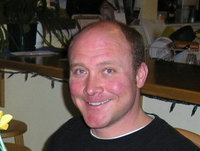
Jason Matthews, founder of Indie Authors show
Jason Matthews started a wonderful show to help indie authors every Monday night at 6pm PST. The show is streamed live, and covers different topics every week. He asked me to host his show on Monday, October 22nd.
If you’re an indie author (a fancier word for self-published) or you’re thinking about becoming one, you may want to listen to an amazing panel of indie authors.
Sonia Marsh: Host for Indie Authors # 33
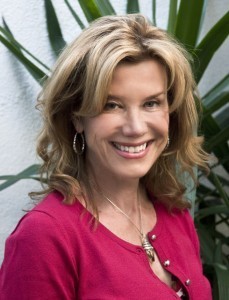
Sonia Marsh
Topic “Indie Authors Can’t do it all; When to get help?”
Topics and watch video below
You want to indie-publish your book, that’s wonderful, but are you sure you have all the skills you need to do the following?
Start a blog and build your platform
Design your author website
Edit your manuscript
Proof read your manuscript
Design your cover
Format your book
Promote your book
Use social media effectively
Get book reviews and endorsements.
Please listen to our panel of 5 indie authors, 4 published and one in the process, and get helpful information on what we’ve done.
Here’s another video for Indie Authors about social media, that Jason Matthews hosted.
You might want to join us on Gutsy Indie Publishers on Facebook. This is a place where all indie authors get together to answer our questions and help one another find solutions.
Share any questions you may have about indie publishing with us below.
***
Do you have a “My Gutsy Story” you’d like to share?
To submit your own, “My Gutsy Story” you can find all the information, and our sponsors on the “My Gutsy Story” contest page. (VIDEO) Submission guidelines here.
Three other October stories are up. So far we have Duke Marsh “My Gutsy Story” and Don Darkes “My Gutsy Story,” and Kim Brower’s “My Gutsy Story,” Doreen Cox “My Gutsy Story.”
I hope you enjoy the “My Gutsy Story” series and share with others through the links below. Perhaps you’d like to submit your own. Thanks.

October 22, 2012
“My Gutsy Story” Doreen Cox
Full Circle: ‘Mommy’ to My Mom
Being called ‘mommy’ at age 61 would not have been such a big deal if that was a joke or my mid-life crisis had included the adoption of children. When my own mother first called me ‘mommy,’ the shock hit me hard, cycling me through turbulent waves of emotion before dumping me into despair. I wanted OUT of this Care Bear experience! One minute Mother was standing beside the bed, chattering away in her dementia-addled language; in the next she collapsed, hitting her head on the bedside table. Blood streamed down her face as she looked at me and cried, ‘Mommy, Mommy, Mommy!’ The Care Bear part of me kicked into gear and got her safe. A new part of me emerged that cuddled her and made soothing remarks to my mother, now my child. I fell apart only after my neighbor showed up to help.
We had come full circle, Mother and I. For the first years of my life, she had fed, bathed and diapered me; cleaned all of my body parts that spewed out a ton of smelly fluids. Mother had comforted, sang to, cuddled, kissed and tickled me. Just as she was there for me at my beginning, so was I there for Mother at her end. I fed, bathed, briefed and cleaned up a ton of smelly fluids.
I sang to, cuddled, kissed and tickled her, making crazy faces in order to elicit a giggle. Never having had children, I finally got an up close and personal experience of what it is like to be a mommy; well, sort of. My child-mother was not learning as young children do; she was in a state of unlearning. A child had taken up residence in the brain of Mother’s aging body.
There were moments when I could hardly stand to be around her, this person who was not like my mother anymore. Mother’s brain could not even tell me if she did or did not need to use the toilet. The guessing game intensified yet, the ‘guess-er’ in me had worn out. At night, trying to discern calls for help from Mother’s sighs and mumbles coming through the baby monitor had worn down my last nerve. At least, each episode felt like a last nerve.
The brain in caregivers cannot help but be covered in a big blanket of guilt. Every time I talked to Mother in a grumpy, irritated tone, her eyes clouded in confusion; lips quivered as her brain scrambled even more, trying to grasp a next word to say. My guilt intensified and I often sank into despair. I had some intense emotional meltdowns during the transition of my role from Care Bear to Mommy. After breathing through one intense toilet-related meltdown, I looked in the mirror and thought, “Who are you? I can’t stand you! I do not even know you!” The thought that I had most about Mother was, “I can’t stand it; how she acts!” I could not stand her behaviors. About myself, though, I cannot recall ever thinking, “I cannot stand how you are!” The emotional pressure was relieved when I recognized how unkind I was being towards myself.
It became easier then to breathe through my tiredness and frustration; to add a more cheerful lilt to my voice each morning and each night when I did a tucking-in ritual. During the night when those bad people showed up, I found it easier to sit and cuddle Mother; to stroke her hair. It was even easier to play the strict parental kinds of roles. I had to get Mother to swallow those pills; use the walker; wear the CPAP mask; join me in the shower and brush the few teeth left in her mouth.
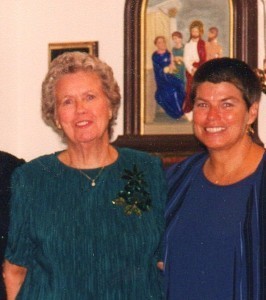
Dody and her mom
My heart opened when I became kinder towards myself and I began to take notice of Mother’s still-loving gestures. “She is still here!” I marveled out loud one day. I began to see the signs of simple love in Mother’s touch on my arm, her bright-eyed sparkling glances at me and her smiles that lit up my heart. One of my favorite memories occurred in the wee hours of a morning several months before she died. The bed rails were rattling. As I stumbled down the hall, tired and annoyed at dealing with night-time delusional events, I paused at her doorway and peeked into the room. She did not need me at all. Mother was having a pretend conversation with the 3 stuffed animals that shared her bed. She had gotten the larger tiger and otter situated on the rail. The little bunny-eared duck would not stay. Mother was animatedly talking to her animal friends. Though her words were garbled, the joy in her voice and on her face filled my own heart to near bursting.
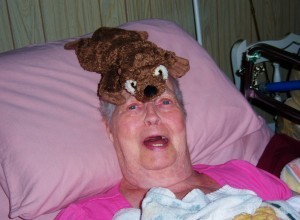
Dody’s Mom
It often seems to me now that the 3 year period as her Care Bear was a final gift offered to me from Mother. I am more aware of commonalities versus differences between me and my fellow humans. Coping with my reactions towards the downward spiral of Mother’s dementia has been the catalyst for me to become a more honest, forthright human being, especially towards myself. I no longer despise the ugly yet human emotions that surfaced during these years; I’ve learned to give them a nod while breathing through their force. When walking in a store or driving in traffic, I feel more humble and connected to those persons whom I pass or accidentally bump up against. I see people who are angry, fearful, impatient or sad. In any given moment, I, too, am feeling any of those same emotions, coping as best I can. I am human after all. I was a helper person to my mother yet also, a person who was emotionally ready to receive help on an emotional, spiritual level.
You can connect with Doreen Cox on Twitter @mothersitting, and on Facebook, and visit her blog.
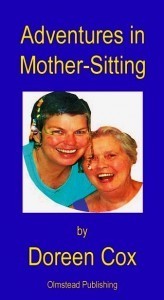
Doreen’s book is on Amazon.
Doreen Cox Bio:
Armed with a BS degree from a liberal arts college, a sense of wanderlust and a passion for experiential knowledge relating to people and their social environments, Doreen Cox began a career path that, to some, might appear haphazard. Her revolving door kind of career path includes: business firm project coordinator positions; hospital staff recruitment; substance abuse counselor; mental health screener; and emotionally disturbed children’s case manager. Such is the author’s career path. The common denominators for each career endeavor are the use of communication and liaison skills in settings that were dynamic to the author because of the diversity of people who she encountered.
The author was into her 8th year as a group counselor at an alternative school for at-risk students when her most challenging position presented itself. The author’s first book, Adventures in Mother-Sitting, is a memoir of her 3 years as a full-time caregiver. Because of the downward spiral of her mother’s mental, physical and developmental abilities due to dementia, the author’s well-honed communication and listening skills were put to their ultimate test. Her previous career adventures had indeed added more stores of knowledge, fostered the growth of self-confidence and provided assuagement of that restless spirit. The experience as her mother’s caregiver, however, offered the ultimate spiritual adventure, bringing to the author bittersweet lessons related to trust, faith, unconditional love and compassion. The author, wanderlust currently at rest, resides in Florida.
Sonia Marsh Says: You told your story with such honesty and it made me realize how sad it is when we love someone and they grow old and can no longer take care of themselves. It’s tough not to get angry and frustrated at times. The sad part is there’s nothing we,or our loved one can change, yet we so desperately want them back to how they used to be. Thanks for sharing your story and opening our eyes.
Please leave comments and questions for Doreen Cox below. She will be over to respond.
***
Do you have a “My Gutsy Story” you’d like to share?
To submit your own, “My Gutsy Story” you can find all the information, and our sponsors on the “My Gutsy Story” contest page. (VIDEO) Submission guidelines here.
Three other October stories are up. So far we have Duke Marsh “My Gutsy Story” and Don Darkes “My Gutsy Story,” and Kim Brower’s “My Gutsy Story.”
I hope you enjoy the “My Gutsy Story” series and share with others through the links below. Perhaps you’d like to submit your own. Thanks.

October 18, 2012
Tired of Negative Media? TED-x Will Inspire You

TED-x Orange Coast
Does negative news affect your mood?
Do you long to hear uplifting news about the world we live in?
If so, I know one place that will transform “doom and gloom” into “how lucky we are to have such amazing people transforming the world we live in.”
Where?
The TEDx Talks around the world.
On October 10th, I attended TEDx Orange Coast at the Segerstrom Center for the Arts in Costa Mesa.
I purchased my ticket a few days before the event, and had no idea what to expect.
The program started at 8:30 am, and continued all day until 5pm with a few coffee breaks and lunch.
An impressive line-up of thirty speakers of all ages and backgrounds discussed the theme “Redefining Relevance.”
Out of thirty or so brilliant speakers, I selected five who truly inspired me to believe in the good in our world.
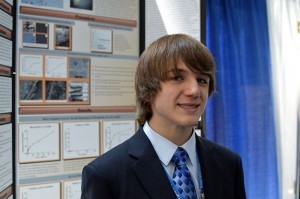
Jack Andraka
1). Jack Andraka Video (High School Innovator) Watch video.
Jack is only 15, and he invented a paper strip, just like the ones diabetics use to test their blood sugar levels, that detects early stages of pancreatic, ovarian and lung cancers. This paper strip costs 3 cents and takes only 5 minutes to work. Jack said that over 85% of pancreatic cancer is detected too late. His enthusiasm and passion is contagious. Watch the video and you will be uplifted by this young man.
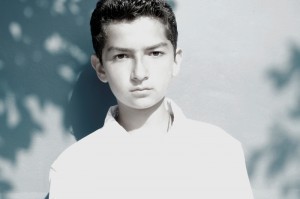
Ray Goren
2). Ray Goren Video (Musician) Watch him play. Amazing blues.
How can a twelve-year-old boy play the blues with such talent? Watch his facial expressions and you cannot help but feel the music is coming from every cell within his body. His electric guitar seems to be an extension of his inner core, not an external instrument.
Watching him on stage at the Segestrom Hall, was one of the highlights of the day.
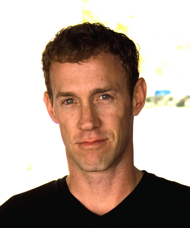
Mike Kenyon
3). Mike Kenyon (Development Leader)
Mike travels around the world and gives mobility back to those who are physically handicapped. He started, “Free Wheelchair Mission” a nonprofit in Irvine, that provides wheelchairs for the disabled poor in the developing world. (Take a look at their website.)
Mike showed photos of disabled kids and adults who are forced to crawl on the ground as there are no wheelchairs for them. With a plastic chair, and a couple of bike tires, Mike was able to create functional wheelchairs for disabled people at very little cost. He showed photos of one mother who carried her teenage son on her back since he was born, and the amazing gratitude they expressed when Mike gave her son a wheelchair.
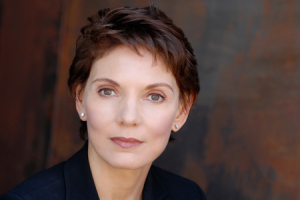
Reggie Littlejohn
4).Reggie Littlejohn (President of Women’s Rights Without Frontiers)
Through a near death experience of her own, and a miscarriage, Reggie discovered that the most painful moment in her life, held the key to her life purpose.
Reggie decided to combat forced abortion, gendercide and sex trafficking in China. She shared stories of young Chinese pregnant women being forced to undergo abortions without anesthesia.
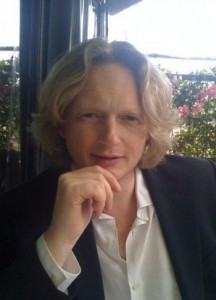
Nigel Nisbet
5). Nigel Nisbet (Director of Content Creation for the MIND Research Institute)
Nigel was a former teacher at an all-girls English school in rural England. After moving to the U.S., he decided to became a Mathemathics, Physics and Computer Science teacher at Van Nuys Senior High.
Nigel noticed that kids were not able to grasp the concepts of algebra and geometry from text books, so one day, at the grocery store, he decided to buy chocolate bars in different shapes and use chocolate to challenge the kids to think. He discovered that this worked and that math is so much more than just numbers.
Nigel is a passionate believer in finding ways to build engaging, interactive visual games that teach all students how math really works.
So by the end of the day, my mood had transformed to all the good that is happening in our world.
If only we could always focus on those positive aspects of life, imagine what creative energy and passion we could project to the rest of humanity.
If you need some inspiration, check out the most popular TED Talks here.
***
Do you have a “My Gutsy Story” you’d like to share?
To submit your own, “My Gutsy Story” you can find all the information, and our sponsors on the “My Gutsy Story” contest page. (VIDEO) Submission guidelines here.
Two October stories are up, both men for a change. So far we have Duke Marsh “My Gutsy Story” and Don Darkes “My Gutsy Story,” and Kim Brower’s “My Gutsy Story.”
I hope you enjoy the “My Gutsy Story” series and share with others through the links below. Perhaps you’d like to submit your own. Thanks.


